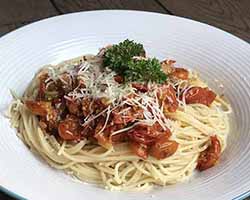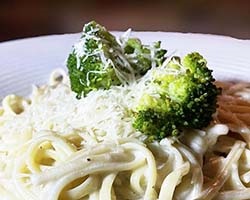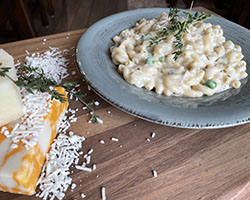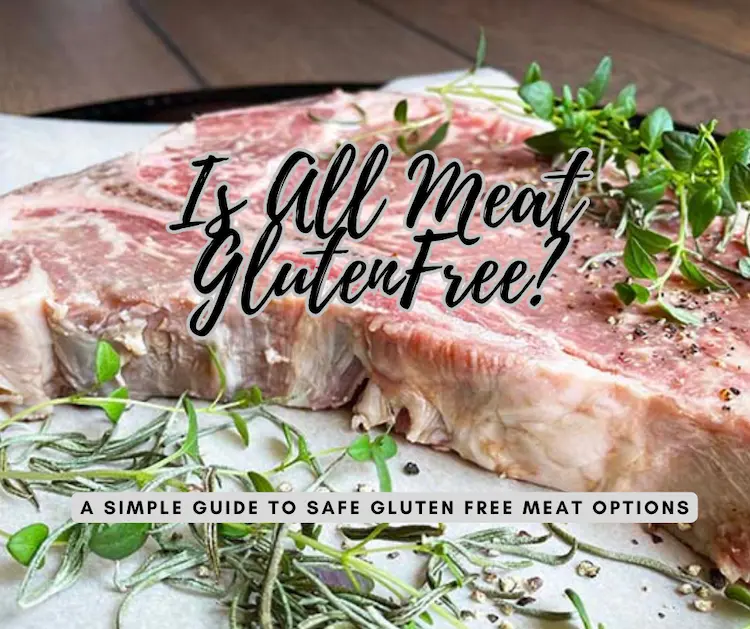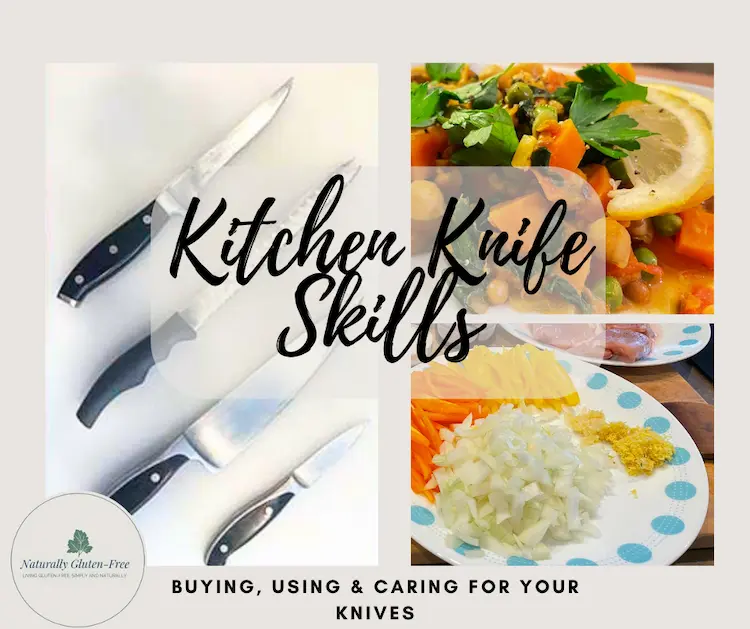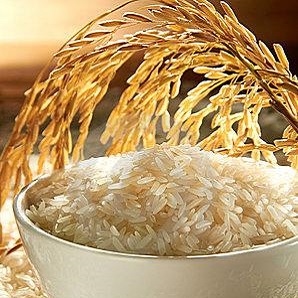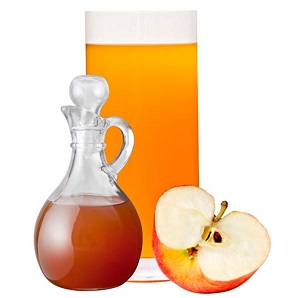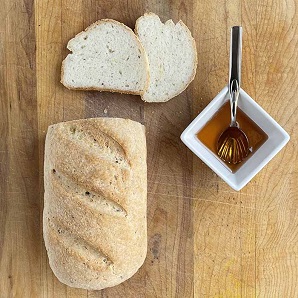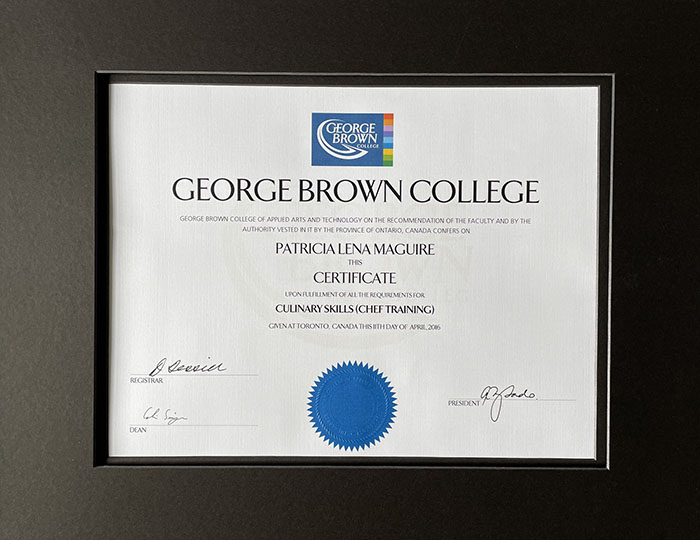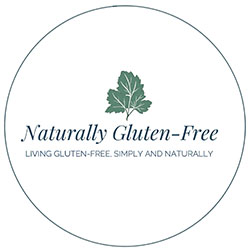- Home
- Gluten Free Food
- Gluten-Free Pasta
Gluten Free Pasta
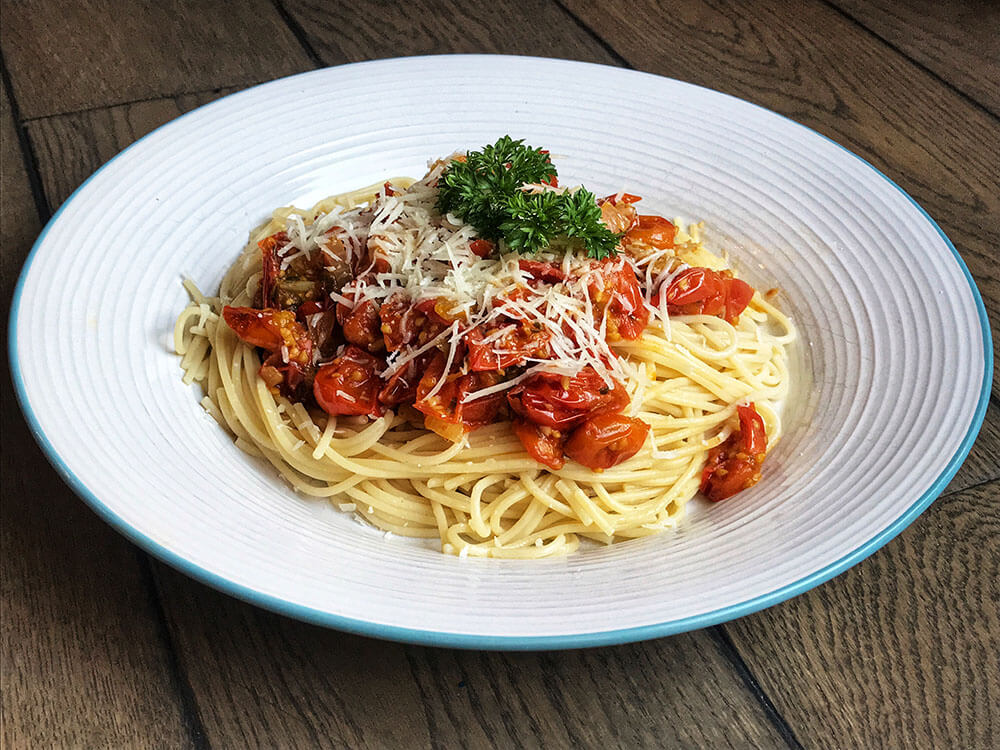
Gluten free pasta holds a very special place in my heart because...well, maybe because sometimes we don't appreciate something until we think it's going away.

I’ll never forget the day I was diagnosed with Celiac disease. I often hear people say they could never give up their bread, but for me...I think every morsel of pasta I’d enjoyed my entire life flashed before my eyes and I seriously began to wonder what I would eat. Several friends who were then much more knowledgeable than I responded to that post and reassured me that gluten free pasta was a thing and that I was in little danger of starving.
Use the links below to jump to the section that interests you, or scroll through for all the info.
Gluten Free Pasta vs. Regular Pasta
If you're on this page, you likely already know what gluten is. It's the protein in wheat, rye and barley and it has that sticky quality that's needed to hold dough together and give baked goods their structure and soft springy rise.
Most pasta is made from wheat flour, so if you have celiac disease or a gluten intolerance, wheat pasta is now off the table.
The good news is, there are many gluten-free grains, and some of those grains are used to make noodles that are completely interchangeable with wheat pasta.
What's the Difference Between Gluten Free Pasta and Regular Pasta?
Does gluten free pasta taste the same as regular pasta?
What my friends who responded to that Facebook post so many years ago didn't tell me was that I wasn't losing an old favorite, I was about to have a whole world of variety open up before me.
Because there are so many varieties of gluten free pasta (see below), the flavors vary too. The ones that look like regular pasta also taste pretty much the same, especially when a rich flavorful homemade sauce is added, or even your favorite jarred pasta sauce. Some people, when comparing gluten-free with wheat pasta actually prefer the gluten-free saying that it has a heartier or nuttier flavor.
Is gluten free pasta healthier?
If you have celiac or a gluten intolerance, then yes gluten free pasta is not only the healthier option, it's the only option. Other than that, it depends on which pasta you choose as the nutrient content depends on the grain that's used to make the pasta. For example soba noodles are made from buckwheat (not technically a grain and no relation to wheat) which is higher in nutrients than grains. Quinoa is higher in protein. Overall, commercial gluten free pastas that are made to replace wheat pasta have a similar nutrient profile to wheat pasta.
How do I cook gluten free pasta?
Because gluten free pasta has no gluten to hold it together it tends to be starchier and to get mushy if over cooked. Here are a few tips to make sure your gluten free pasta turns out perfect.
Use a generous amount of boiling water. All pasta is best cooked in a generous amount of water. This is especially important for gluten free pasta. It seems to release more starch into the water than wheat pasta so if there isn’t enough water it can become a bit mucky.
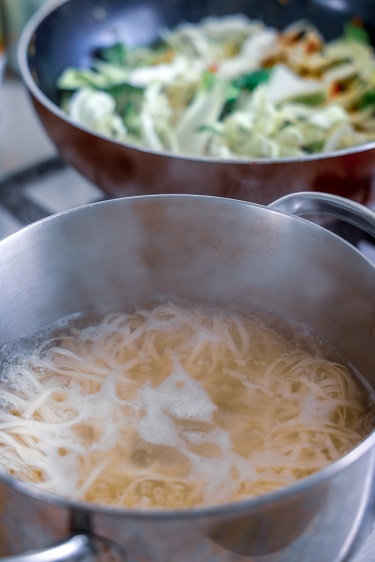
Add a little salt. Adding salt to the water boosts the flavour and helps keep it from sticking too. You don't need to add oil when cooking dry pasta, only the fresh stuff needs oil.
Don't stir too much. Just dump the pasta into the boiling water, give it a stir to ensure it's all separated then stir only a couple of more times during cooking to ensure it hasn't started to stick.
Simmer don't boil. Be gentle on your pasta! After you pour it into the boiling water and give it that first stir, let the water come back to a boil then turn the heat down to a simmer. This will keep the pasta from breaking up and from releasing too much starch.
Do not overcook. This is of course important for any pasta. It should be served al dente; tender but still with some resistance when you bite into it. This is especially important for gluten free pasta. Because it has no gluten to hold it together, it’s not nearly so forgiving as wheat pasta and can cross the line quickly from al dente to mush. Start with following the cooking time on the box minus one minute. Then taste it and if it's not done wait another minute then test it again.
Drain and serve. If your gluten free pasta needs to sit for a few minutes you can add some butter or olive oil to keep it from sticking and put the lid on the pot to keep it warm.
Reheat with confidence, and a little moisture. Sometimes leftover gluten free pasta gets a little hard in the fridge. Adding sauce while reheating should tenderize it just fine. If you're not reheating with the sauce, then just a little water or other liquid will create some steam and freshen it up nicely.
Varieties of Gluten Free Pasta
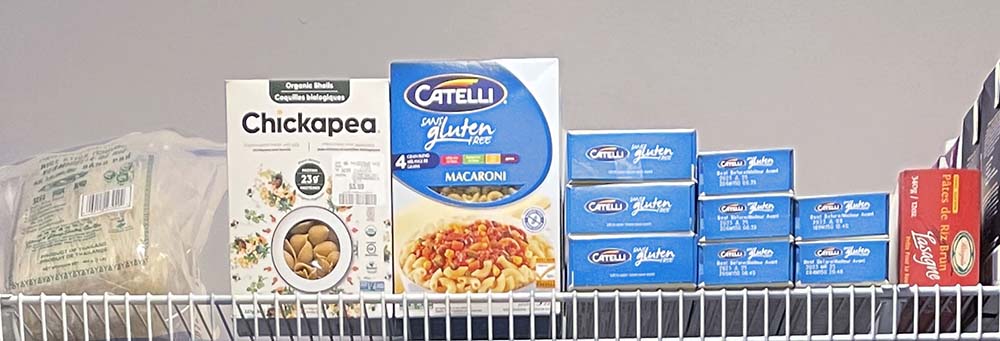
Gluten free pasta comes in all of the shapes that
wheat pasta does. From beautiful strands of spaghetti or linguine that you can twist around your fork, to macaroni for your mac and cheese or penne and fusilli to grab onto those chunky sauces or tiny orzo noodles that you can add to soups. You can even get oven ready lasagna noodles.
What is Gluten Free Pasta Made From?
If regular pasta is made from wheat then what is gluten free pasta made from? It can be made from any one of a variety of grains and seeds, or sometimes from combinations. Often there is a binder to hold the dough together since there is no gluten to do that job.
Here is a list of the most common types of gluten free pasta. Check out the products page for brand suggestions.
Rice Pasta
This may be the most common variety of gluten free pasta. It’s paler in color than wheat pasta and in my opinion it’s a little bland in flavor. However, pasta is usually a carrier for whatever sauce you choose, so if you’re topping it with something flavorful you won’t notice the difference. It cooks up nicely and will work well in any traditional pasta dish.
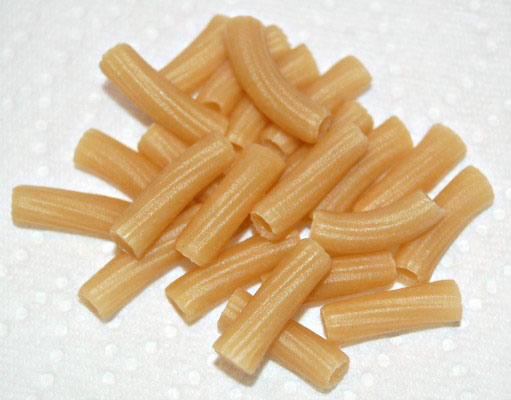
Asian Rice Noodles
|
These come in a few different shapes. Mostly long stringy noodles in varying thicknesses, flat or round. These are used mostly in Asian dishes, but I like them in soups too. The thinner vermicelli noodles are typically not cooked, just softened in hot water for a few minutes. If you're eating in a restaurant that offers Asian noodle dishes they are likely using rice noodles like these so you may have yourself a delicious, naturally gluten-free dish! Just ask to be sure. |
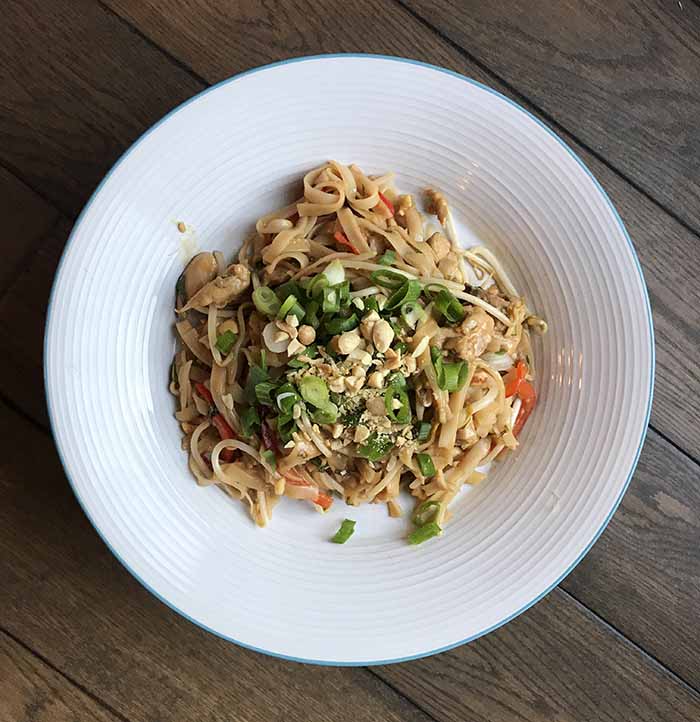 |
Corn Pasta:
Corn pasta is more yellow in color than other gluten free pastas. I like corn pasta in salads or other dishes that will be complimented by the beautiful yellow hue. You can mix it with rice pasta to give some color contrast, but I'd cook the two separately. Be careful not to overcook your corn pasta. This one more that the others has a tendency to lose its shape if over done.
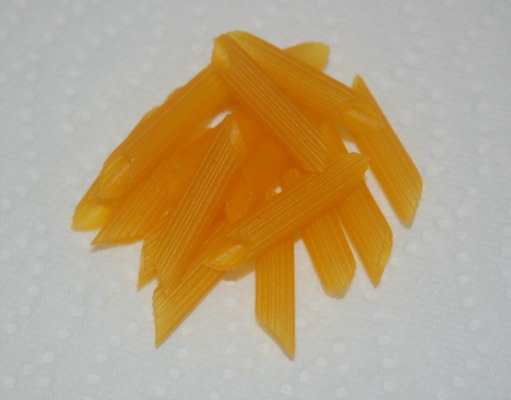
Multi-Grain Pasta
|
The multi-grain varieties do the best job in my opinion of duplicating wheat pasta. They are a similar color and consistency when cooked and the taste is virtually indistinguishable. Catelli, which you may have noticed from the photo at the beginning of this section, is my favorite uses a blend of white rice, brown rice, corn and quinoa. Barilla is another popular multi-grain brand made with rice and corn. |
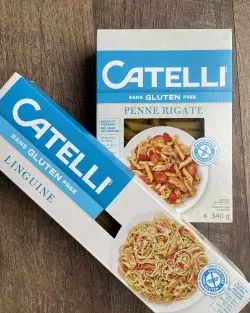 |
Soba Noodles
Soba noodles are made from buckwheat which, despite the scary name, is naturally gluten-free. They are darker in color and have a nuttier, more robust flavor than traditional pasta noodles. You can pair them with your favorite sauce or add them to a soup or stir fry.
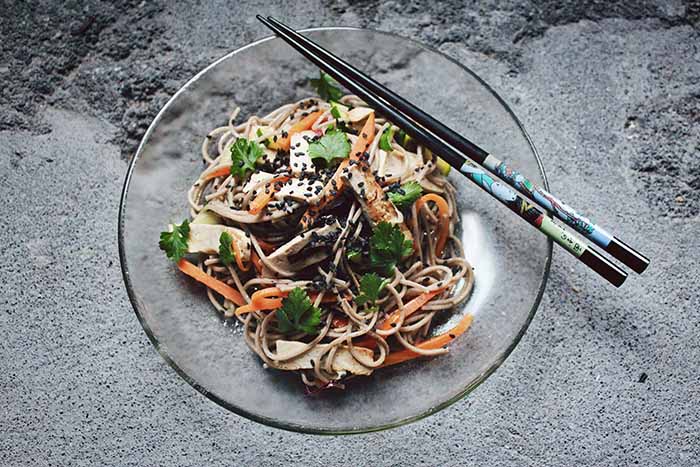
Quinoa, Chickpea and Black Bean Pastas:
|
Once you get out of the wheat pasta rut and start looking at what's available, you'll find some interesting choices out there. I say try them all! Be adventurous. I still can't believe that on that day I was first diagnosed, I thought my choices would be limited. Instead I found so many options that I wouldn't have even thought to look for. |
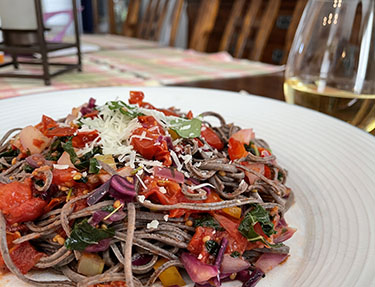 |
Best Gluten Free Pasta Brands
After cooking hundreds, maybe even thousands of pots of gluten free pasta, I'm convinced that success is less about the brand and more about how you cook it.
If you find one you really like, by all means keep it as your staple, but don't let that stop you from trying different varieties.
Catelli
Catelli gluten free pasta is my personal favorite. It's made from a four grain blend of white rice, brown rice, corn and quinoa. The texture is similar to wheat pasta and it holds up well when cooked. This is the one I use for all my traditional Italian type pasta dishes. They have all the shapes: spaghetti, linguine, fettuccine, macaroni, penne, fusilli. Catelli gluten free pasta is available in most grocery stores and on Amazon.
Barilla
Barilla gluten free pasta is definitely the most popular choice. If you google "best gluten free pasta", you're likely to find the first dozen or so entries list Barilla at or near the top. Same in all the forums I participate in. This is well deserved. It's cooks up nicely and tastes very similar to wheat pasta, and compared to some premium brands it's reasonably priced. Also available in most grocery stores and on Amazon.
Cost of Gluten Free Pasta
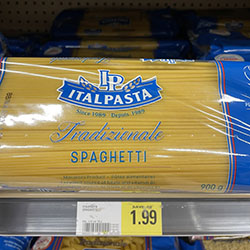


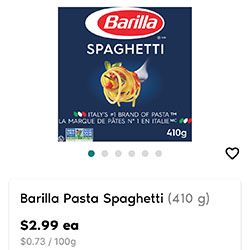

The price you'll pay for gluten free pasta will of course vary depending on where you live and what your brand preferences are.
What I'm finding where I live, near Toronto, Canada, is that there is a small difference if you compare the gluten free and gluten versions of the same brand.
The Catelli examples above are exactly the same price. The Barilla gluten free is $0.50 (about 17%) more. The big difference I see is that you can get cheaper off brands in gluten pasta like this Italpasta example which is a dollar cheaper for more than twice as much pasta.
When I was young and on a tight budget, these brands formed the staple of my diet. They're not an option now.
Homemade Gluten Free Pasta
Making your own homemade gluten free noodles from scratch is a lot of fun. You can buy expensive equipment if you really want to get into it, but if you're just experimenting, a rolling pin, a bowl and your hands will do.
Basic Gluten Free Pasta Dough
The basic pasta recipe is very simple, just flour, olive oil, eggs and salt. Gluten free pasta is the same but with gluten free flour of course and a little extra xanthan gum to hold it together. I haven't developed my own gluten free pasta recipe because, why re-invent the wheel. It's very basic and the internet is full of them. This recipe from G-Free Foodie is about as simple as it gets, and works quite well..
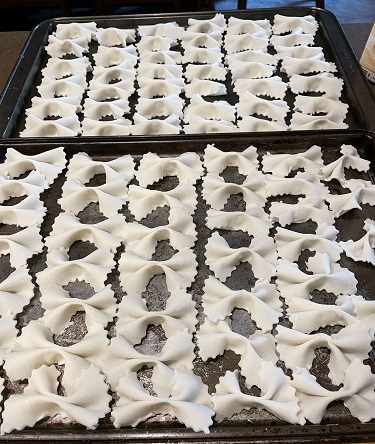
Vegan Gluten Free Pasta
But alas, those of us with celiac often have other food intolerances, and I've developed one to eggs. So even though I'm not vegan, this is the recipe I use. Believe is or not, it's actually simpler than the original recipe and I prefer the texture of the dough. The secret is in the hot water.
Gluten Free Pasta Alternatives

Some people just don’t do well with grains at all. Or maybe you're trying to reduce the carbs in your diet. That’s okay. You can still have a perfectly healthy grain free diet, and with a little imagination it can be tasty and satisfying too.
If you read my newsletter, you know that hubby and I have dove into the keto diet, with a fair bit of success. This has meant re-thinking some of our favorite dishes, including pasta. Once again, necessity is the mother of invention, and limitations can stimulate all kinds of creative solutions.
Zucchini, eggplant and cauliflower are vegetables with very mild flavor, so they take on the flavor of whatever you cook or top them with, much like pasta. The other advantage is that they are naturally gluten free, so if you're looking for a totally 100% naturally gluten free pasta, then this is it.
Zucchini "Pasta"
Have you heard of "zoodles". As I'm sure you guessed, it's a mash up of zucchini and noodles, and they really are delicious. If you're looking for a way to make your own homemade gluten free noodles that doesn't involve making dough, and will help you reduce your carbohydrate intake, maybe this will be your thing.
Zucchini Lasagna
Want to lighten up your lasagna a bit and reduce the carbs? Zucchini makes a great substitute for lasagna noodles. It's easy and your family will love it. Mine tells me that they really can't tell the difference.

Slice up your zucchini just a little thicker than cooked lasagna noodles. A mandolin slicer works great for this. You can peel the zucchini or leave the skin on, up to you.
Add a little course salt and leave it in a colander to drain for about 15 to 20 minutes. Blot it dry with paper towels, squeezing as much of the water out as you can, then proceed with your favorite lasagna recipe.
Keep in mind that your zucchini lasagna noodles won't soak up the sauce like regular gluten free pasta does so a little less liquid is a good idea. If you find your zucchini pasta is a bit watery, remove the foil from your baking pan a little earlier in the cooking time than the recipe calls for to let some of the water evaporate.
Eggplant Lasagna
Follow exactly the same instructions as above but substitute sliced eggplant for the zucchini. It's every bit as good and it's a great way to get this nutritious vegetable into your diet.
Zucchini Spaghetti or "Zoodles"
Also known as "keto zucchini pasta", these can be found frozen at the supermarket or you can make them yourself at home. It's easiest to make homemade zucchini noodles with a spiralizer but you can also make zoodles without a spiralizer by julienne slicing your zucchini on a mandolin or with a knife. Your zoodles will shrink up when cooked so you want one small zucchini (about 6 oz.) per person.
Cooking Zucchini Noodles

There are two ways to prepare your zoodles. I prefer the oven method. You may want to try both and decide for yourself.
Method 1. In the oven: Preheat your oven to 375°. Spread your zoodles out in a single layer on a parchment lined baking tray. You'll use one full tray for each serving as you don't want them overlapping too much and they shrink down a lot.
Then bake them in the oven for about 15 minutes.
Serve immediately
Method 2. Salt and Sauté: Similar to the lasagna method, sprinkle your zoodles with a little coarse salt and let them drain in a colander for about 15 min. Squeeze all the water out then sauté in a frying pan.
Cauliflower "Pasta"
Cauliflower make a perfect gluten free pasta substitute if you think of things you would normally do with macaroni or other short cut types of pasta. Baked tuna casserole? Check. Add to soup or stew? Sure. Substitute in your favorite macaroni salad recipe? Of course.
Cauliflower "Mac" and Cheese
I personally LOVE macaroni and cheese and was in need for a lighter, low carb version. Here is it. I just use 1/2 the sauce from my classic Gluten-Free Macaroni and Cheese recipe and add it to one whole cauliflower that I've cut into macaroni sized pieces and cooked in boiling water for about 8 minutes. Just like macaroni right?
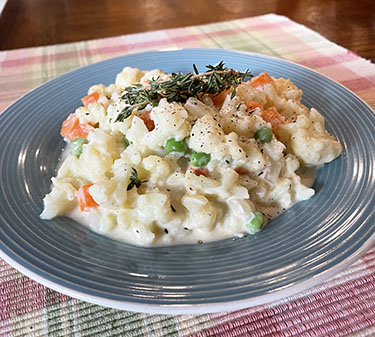
Spaghetti Squash
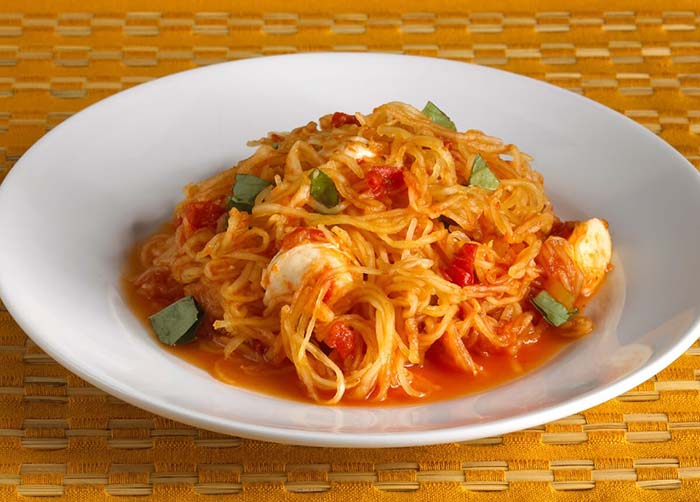
It's called spaghetti squash for a reason. It has a lovely, stringy yet tender texture that is perfect for spaghetti dishes. Bake it in the oven then pull the lovely pulp out with and fork and add sauce. Delicious, healthy, low carb, low calorie.
Gluten Free Pasta Recipes
Home > Gluten-Free Foods > Gluten Free Pasta



